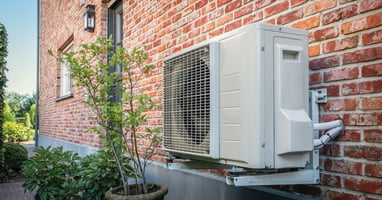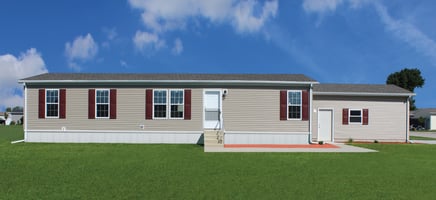We've all been there on a chilly winter morning. You throw off the blankets and hope to kick-start...
Mobile, Manufactured, and Modular Homes: What's the difference?
Many people think that manufactured homes, mobile homes, and modular homes are one and the same, but that is not the case. The three home types all have some things in common, but they also have key differences that separate them. This article aims to explain the basics of mobile, manufactured, and modular homes, and the primary characteristics that make each home type unique.
What is a Mobile Home?
Out of mobile, manufactured, and modular homes, mobile and manufactured are the two descriptors most often used interchangeably. That's because the two types of homes aren't all that different from one another, apart from one key attribute: mobile homes refer to units built prior to June 15, 1976. It was on that date that the US Department of Housing & Urban Development (HUD) instituted the Federal Manufactured Home Construction and Safety Standard Act to dictate the standards of construction behind factory-built homes. So, anything built prior to June 15, 1976 is considered a mobile home, and anything built after that date is classified as a manufactured home. Because of the standards that were implemented, newer manufactured homes built in the last 49 years are typically higher quality than older mobile homes built over 50 years ago.
What is a Manufactured Home?
A manufactured home is a factory-built home that was constructed following the implementation of HUD's Federal Manufactured Home Construction and Safety Standard Act of June 15, 1976, and is built to that standard. The Act sets standards for durability, design and construction, a home's ability to be transported, fire resistance, quality, heating, cooling, plumbing, and energy efficiency, among others. The HUD Act helped improve the quality and construction of factory-built homes. Every manufactured home is labeled with a red tag to demonstrate it has been built to HUD standards.
What is a Modular Home?
Like manufactured and mobile homes, modular homes are pre-built. But they begin to vary from the other classifications after they leave the factory. Sections of modular homes are often assembled on-site over a concrete foundation. Unlike a mobile or manufactured home, once a modular home is assembled, it cannot be moved or transported to another lot - it's there for good. Modular homes tend to offer better durability, better features and often resemble site-built homes in terms of greater square footage and steeper roof pitch. Modular homes are typically more expensive than mobile homes and manufactured homes. It's also important to note that modular homes are not required to be built to HUD code, meaning that the consistent standards set forth by the Federal government may not apply.
Key Similarities
- Mobile, manufactured, and modular homes are all factory-built homes that are transported, typically by flatbed truck, to a home lot for placement and/or assembly.
- Mobile and manufactured homes are essentially the same - the key differentiator is the time when it was built and the standards that apply to its construction.
- Though manufactured homes may be placed on a concrete foundation, most manufactured and mobile homes require lot securement through anchors or tie-downs to secure it in place.
- Manufactured and modular homes typically arrive in one or two pieces and need to be assembled on site.
Key Differences
- Modular homes cannot be moved once they've been assembled.
- Modular homes are usually assembled over basements or crawlspaces, and do not need to be secured via tie-downs like mobile and manufactured homes.
- Manufactured homes must have a red tag to note they have been constructed in compliance with HUD's Federal Manufactured Home Construction and Safety Standard Act. Mobile home predate this requirement, and modular homes need only be compliant with local building codes.
- Since they are designed to look like and include the features and size of conventional site-built homes, modular homes are generally more expensive.
Whatever your home, Capitol Supply & Service can provide products and services to help maintain and improve it from set-up equipment, skirting, steps, doors, windows and trim, to full-service HVAC repair and install/replacement. Call our team at 1-800-482-1185 or visit any of our 6 branches across Michigan and Northern Indiana.



